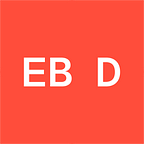Bionomous — a portable devices that automatize processes in biology and biotechnology
The EPFL based start-up develops product to sort small biological entities. Frank Bonnet, CEO, shares the design story and main challenges they had to face while developing Bionomous’ devices.
Founded in November 2019 by Frank Bonnet et Ana Hernando Ariza, Bionomous aims at bringing to the market new solutions that combines innovative micro-engineering design and machine learning methods to automatically count, screen, sort and dispense miniature biological entities. “Our patented technology was originally created to enable the mechanical sorting of zebrafish eggs. Today, we are exploring the possibility to apply this technology to other fields of research, such as Xenopus laevis or Arabidopsis thaliana”, explains Frank Bonnet, CEO of Bionomous and research scientist at Biorobotics Laboratory at the EPFL
The start-up is currently working on the development and commercialization of such devices that automatize processes in biology and biotechnology, to accelerate research in fields such as genetics, toxicology, development and behavioural biology, and non-clinical studies.
Industrial design expertise: a must-have
“At EPFL, we learn how to create and assemble mechanical components so that it holds together, but we don’t necessarily learn how to build a body around it that is easy for future users to grasp,” observes Bonnet.
In order to bring its technology to market efficiently, Bionomous needed industrial design expertise. “We needed the skills to go from a lab-made prototype with a poor user interface to something that was easy to handle,” he says. “We became sensitive to design, as we were testing our first prototype and realized that it was a missing aspect. some of the interfaces that the user had to control were not easy to access and, conversely, the ones that should not be touched were accessible. Also, we realized that for the price of such equipment, laboratories working in life science and biotech expect a device that is easy to clean and well packaged”. This is when the start-up received support from Enabled by Design.
The device developed by Bionomous contains many design challenges: “Our machine embeds both a lot of fluids and a lot of electronics. Two things that, as we know, are not really compatible,” says Bonnet. “Fortunately, the designers from the agency Multiple we worked with have a lot of experience in designing devices with similar challenges, for instance coffee machine. It was a chance for us, because they had a direct view of where to store the electronics for our product to be safe and easy to use”. The designers managed to integrate the different modules of the “EggSorter”, in such a way that it is as convenient as possible for the user and, at the same time, not too complicated in the technological part.
“We developed the first proof of concept of the EggSorter in 2017. Then, in 2018, we received the first funds of the EPFL to develop a prototype. After two prototype iterations, we managed to developed a fully functional EggSorter that we brought to end users in 2019, to validate the technology. Once the technology was qualified and the design requirements known, we then developed this beta version jointly with Multiple (Mechanics + Design) and RC2 (Electronics) to obtain a stable version that we can now, once again, bring to end-users for final feedback, before starting the sales.”
The EggSorter allows to automatically screen, analyze and sort out small biological entities. The device does not even require an external computer, as all the processing is embedded, and the user can simply interact and configure the device via a convenient tactile screen and Android application. The device is portable and thus can be easily transported anywhere in the laboratory.
From prototype to finished product
“The support from Enabled by Design allowed us to move from prototype to finished product, while acquiring new skills” adds Bonnet. “Without it, it would have been difficult for us to move forward, as we needed funding to move up a gear.“
According to Frank Bonnet, developing the technology is paramount, but securing funding to build robust prototypes to go to the market as quickly as possible and get feedback is critical. “Only then can we develop a finished product that meets the needs of the users.”
The next steps for Bionomous are testing with users and validation of the machine by potential customers. “If it satisfies their needs, we will be able to open up sales and plan the industrialization phase in the months to come”.
